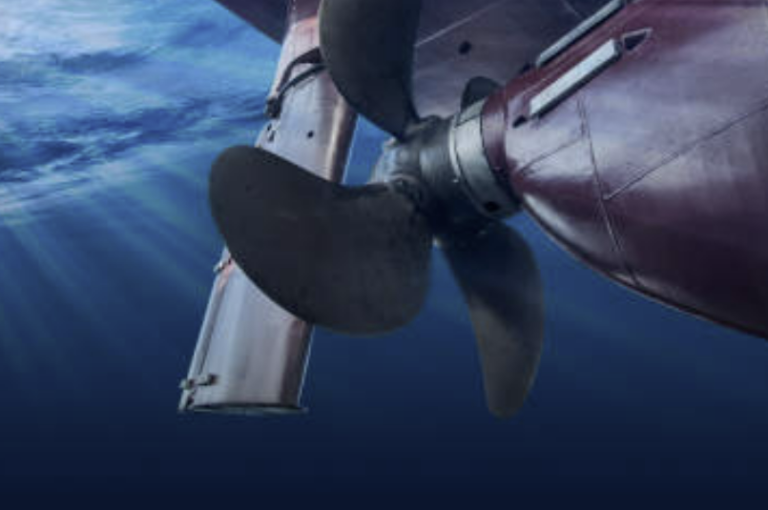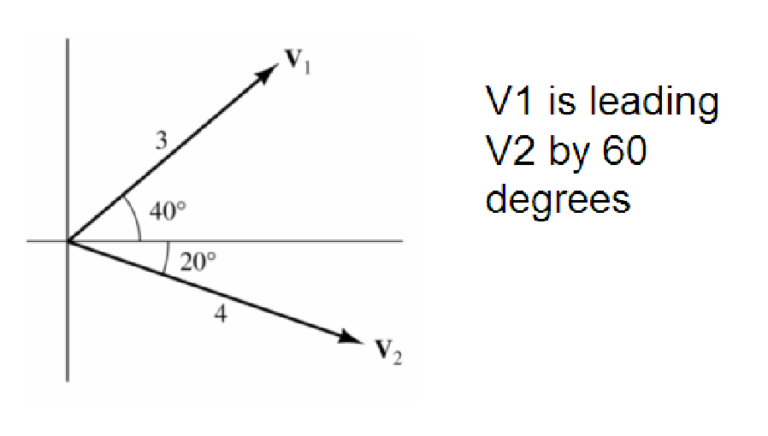Understanding DC Motor Basics
What is a DC Motor? Why are they important? Well, buckle up, because we are going to answer all those questions and much more! Whether you’re a budding engineer or just someone curious about the tech that makes the world go around, this article will break down the basics and give you a glimpse into the captivating universe of electric motors.

What is the DC Machine?
A DC motor is an electrical machine that converts direct current electricity into mechanical energy. DC Machines are easy and flexible to control and widely used since there is an established manufacturing technology to build them.
Direct Current Motor Applications
DC motors find a wide range of applications across industries and everyday life. They are essential components in cranes, where their precise control and high torque capabilities are utilized for lifting heavy loads. Conveyors rely on direct current motors for smooth material handling, ensuring products move efficiently along production lines. Pumps and fans benefit from DC motors’ ability to deliver consistent and adjustable flow rates, making them ideal for applications requiring controlled fluid movement and ventilation.

In machine tools, DC motors drive cutting and shaping processes with accuracy and reliability. Additionally, direct current motors power air compressors, providing compressed air for various industrial processes. In the realm of entertainment and leisure, DC Motors is the driving force behind toys, bringing joy and amusement to children worldwide. Even in automotive engineering, DC motors play a crucial role as motor starters in cars, initiating the combustion engine with precision and efficiency.
How are DC motors Generally Classified?
DC machines are classified based on how the field winding is connected. The field windings can be operated in different configurations, depending on the winding connections. Windings at the stator (field winding, can be magnets as well) provide a magnetic field. Windings on the rotor (armature) produce current and generate a Lorentz force.
1) A shunt motor has its field winding connected in parallel with the armature.
2) A series motor features its field winding connected in series with the armature.
3) A compound motor combines both shunt and series field windings in its design.
Brushed DC Motor
In a brush DC motor, current flowing through a commutator and brush connected to the rotor generates the magnetic field. Brushes, typically made of carbon, can be either separately excited or self-excited. The stator, which encloses the motor’s components, houses the magnetic field. The coil winding on the rotor can be in series or parallel, creating either a series-wound or shunt-wound DC motor.
Brushless DC Motor (BLDC)
Brushless DC motors, or BLDC motors, operate using a permanent magnet synchronous electric motor driven by direct current and an electronically controlled commutation system, which produces rotational torque by changing phase currents. These motors are also known as trapezoidal permanent magnet motors.
Unlike brushed DC motors, which rely on mechanical contact with the rotor, BLDC motors use electrical commutation. A BLDC motor consists of a magnet rotor and a stator with a sequence of coils. While the permanent magnet rotates, the current-carrying conductors remain fixed in position.
Separately Excited DC Motor
An interesting variation is the separately excited DC machine, where the field winding receives power from a distinct voltage source, enabling precise control over the motor’s behavior. The operations of the armature current and field current do not hinder each other, but together they represent the total input power.
The Whirring Heart of It All: The DC Motor
At its core, a direct current motor is a device that transforms electrical energy into mechanical motion. Its basic structure is pretty straightforward: there’s a stationary part called the stator and a rotating part called the rotor. The stator contains permanent magnet or field windings that generate a magnetic field, while the rotor houses the armature windings through which current flows. When you send an electric current through the armature windings, the interaction between the magnetic fields creates a rotational force – and voilà, motion!
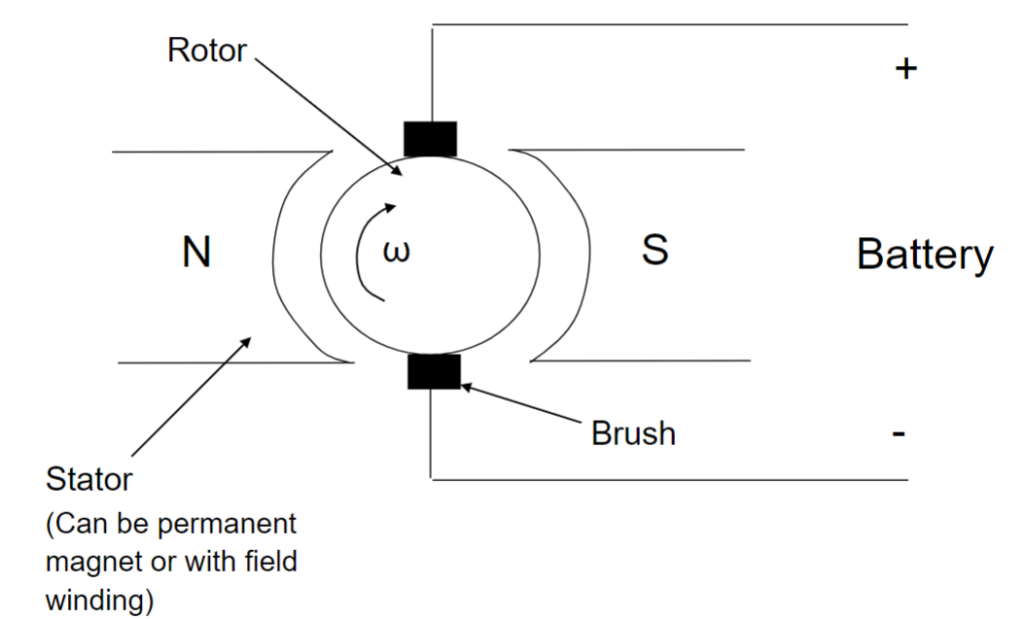
What are the power losses of a DC motor?
Just like a car burning fuel, a DC motor has its energy considerations. The power that goes into the motor isn’t all converted into mechanical power – there are losses along the way. The losses that occur in a DC Machine can be divided into five basic categories (see picture below). You’ve got copper losses from the resistance of the windage, Electrical or Copper losses (I2R losses), and these are just a few! There are additional losses such as eddy current losses, hysteresis, and friction. All these losses are inevitable when dealing with a direct current motor.
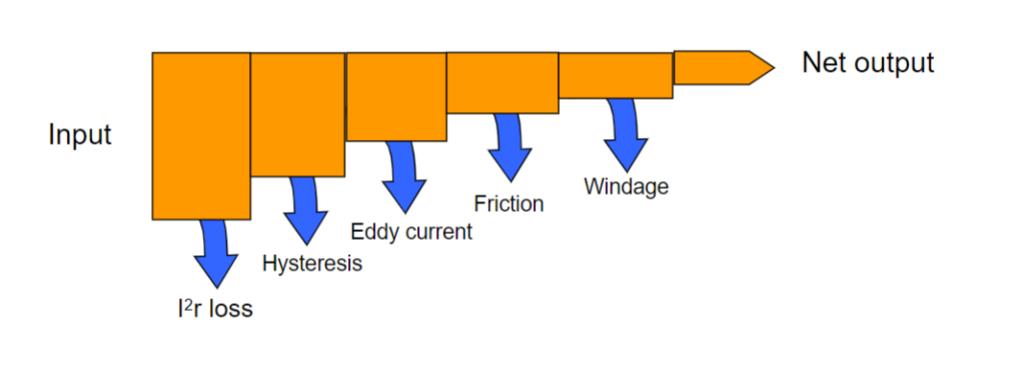
Power Play: Power Transfer, and Torque
Speaking of power, let’s talk about how it’s transferred. The motor drive system – a combination of the motor and its control electronics – ensures that the power source provides the right amount of juice at the right time. Think of it as the conductor of a grand orchestra, coordinating the energy flow to keep the motor humming harmoniously.

Unveiling Torque-Speed Curves and the Dance of DC Machines
Torque and speed are the dynamic duo of a DC motor’s performance. They’re like Batman and Robin, working together to save the day. The torque-speed curve is a graphical representation of this partnership, showing how much twisting force (torque) the motor generates at different rotational speeds. The relationship between speed and torque varies dramatically across different types of motors and also between manufacturers.

Taking Control: Separately Excited DC Machines and Torque Generation
Controlling a DC motor is like taming a wild stallion – you want just the right amount of power. This is where the separately excited DC machine shines. By adjusting the voltage applied to the field winding, you can modify the motor’s speed and torque with finesse. It’s the conductor’s baton, guiding the motor’s performance in a symphony of motion.
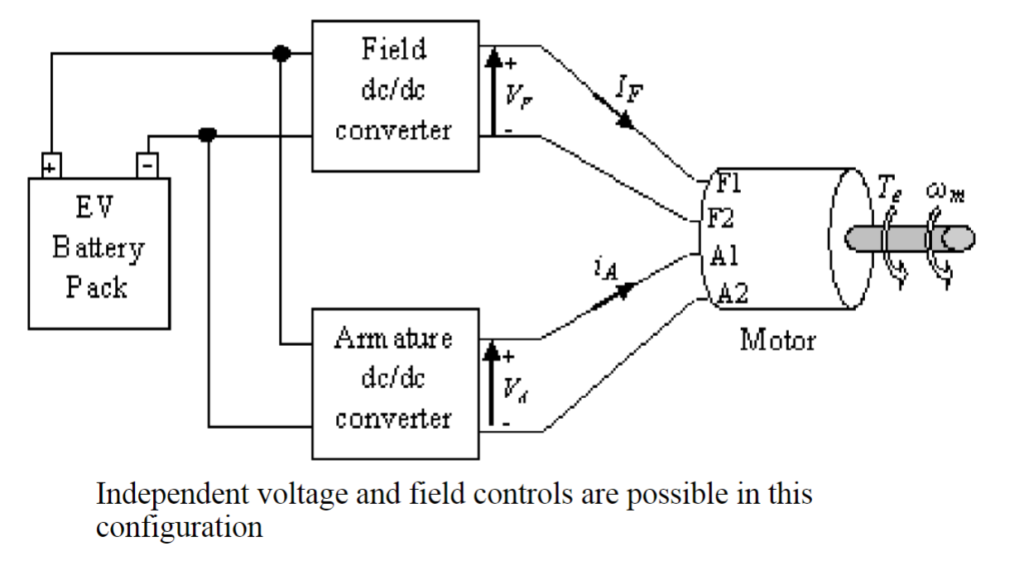
How do you calculate torque on a DC motor?
Now, let’s demystify how torque is generated in a DC motor. As current flows through the armature windings, it interacts with the magnetic field from the stator. This interaction creates a force that twists the rotor. The more current you send, the stronger the magnetic field, and the more torque is generated. The total force acting on the armature equals to the force acting on a single turn of coils multiplied by the number of total turns.

What does back emf do to a motor?
As the armature of a DC motor turns due to the driving torque, its conductors traverse the magnetic field, resulting in the induction of an electromotive force (emf) similar to a generator. This induced emf opposes the applied voltage V (Lenz’s law) and is termed Back EMF or Counter EMF (Eb). If there is no load on the motor (i.e. the motor can rotate freely with no friction), then the rotational speed of the motor will increase until the back emf exactly matches the voltage supplied to the motor.

Advantages and Disadvantages of a DC Motor
Brushed DC motors exhibit good performance in starting and speed regulation. They boast a relatively high torque density and operate smoothly with a wide range of speed regulations. These motors also offer strong overload capability and low electromagnetic interference. However, a drawback of DC motors is their structure, which involves sliding contact between the commutator and the brush, leading to sparks and mechanical wear. This results in a relatively short life expectancy and high maintenance costs, raising concerns about reliability.
Conclusion
In conclusion, grasping the fundamentals of DC motors is essential for anyone curious about electrical machinery. From the basic structure and operation principles to the various types and applications, DC motors play a vital role in countless industries and technologies. Their simplicity, efficiency, and versatility make them a cornerstone in modern engineering. Whether powering a toy or driving industrial machinery, the principles behind DC motors continue to drive innovation and shape our technological landscape.



